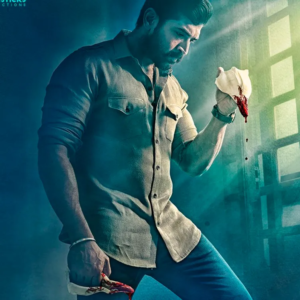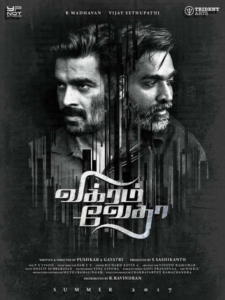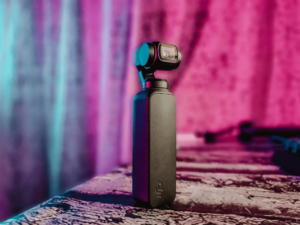The best boy assists the gaffer or the key grip on a film set. In this role, you can specialize in electrical and lighting aspects or provide camera support. In either case, the best boy performs technical and physical tasks for the production crew.
The Types of Best Boy: Duties and Responsibilities
Most film sets have two types of best boys. Although both handle physical labor and paperwork, each one assists with certain specialized tasks. As a best boy, you can take on either role:
- Best Boy Electric: In this position, you serve as the second-in-command to the gaffer, who is the chief lighting technician and head electrician on a film set. The best boy electric performs tasks like managing lighting inventory and unloading electrical equipment.
- Best Boy Grip: In this role, you’re the right-hand person to the key grip, who oversees the camera grip crew. The best boy grip assists with camera support, such as placing dolly tracks or organizing camera accessories.
Where Does the Term Come From?
If you think the term “best boy” sounds old-fashioned, that’s because its roots lie in the early days of moviemaking. In the early 20th century, film technicians often asked the head of the grip or electrical department for help from “their best boy, or the most experienced crew member. Since this crew member was typically the second most-experienced person, the name “best boy” emerged.
However, some members of the film industry believe that the term has even more historical roots. In fact, some people believe that “best boy” comes from sailing terminology or from British apprenticeship culture.
Is It Always ”Best Boy?”
Best boy is the most common name for this position. However, some female crew members in this role go by “best girl” instead. For example, the credits for “2012” and “Rise of the Planet of the Apes” show Sierra Hurst as rigging best girl.
Education & Training
If you want to work as a best boy, formal education is optional. Although you can benefit from film production or visual media courses, you can learn many of the technical aspects of the job at work.
To learn the basics, you can join workshops that teach you the basics of construction or working with power tools. You can also read how-to-guides or watch DIY videos to learn how to repair things on set or help you advance practical skills.
What Skills Do You Need?
Whether you want to be a best boy electric or a best boy grip, you need these essential skills:
- Attention to detail: You have to know where every lighting, electrical, or camera accessory is at all times, and you should be able to anticipate when your boss needs each one.
- Communication: You have to be able to speak clearly and listen carefully so you can hear and respond to instructions efficiently.
- Flexibility: Each film set is different, and best boys have to be willing to adapt to the conditions and learn crew etiquette.
- Teamwork: Best boys must be able to work closely with and support camera crews and camera grip and lighting departments.
What to Expect
To excel in this role, it’s critical to know what to expect from your first job and as you develop your career path.
Personality
You’ll fit easily into a best boy role if you’re organized and eager to work closely with others. As a best boy, you should also know when to manage others and when to follow instructions.
Lifestyle
When you work as a best boy, you can expect to work long days. Early in your career, you should be available to accept jobs at a moment’s notice and be prepared to go without work for several months. In addition, you may need to travel for work, depending on the kinds of productions you join.
Employment
Best boys generally start out as company grips or lighting assistants. After doing well on a few smaller projects, you’re likely to find opportunities to take on more responsibilities for future productions.
Advancement
As you advance in the industry, it’s essential to create and maintain connections. The more crew members you know, the easier it is to find more work. After working for a few years as a best boy, you can consider pursuing key grip or gaffer positions.
Unions, Groups & Associations
Best boys often join the International Alliance of Theatrical Stage Employees (IATSE) Local 80. This labor union offers support and protection for grips, craft service employees, set medics, warehouse workers, and other select crew members. Union members can also attend classes and professional development programs.
How Much Does a Best Boy Make?
On average, a best boy makes about $92,000 per year. Early in your career, you may make minimum wage, which is about $150 per day for a 12-hour workday in Los Angeles. By mid-career, you could earn twice that daily rate.
For best boys, earning potential also depends on the type of productions you handle. Music videos often pay on the lower end, while commercials often pay more than average. Independent films tend to have limited budgets and pay closer to minimum wage.
What’s Next? Learn More About Roles on Film Crews
The best boy is just one of many important supporting roles on a film crew. From dolly grips to Foley artists, check out 10 other film crew positions.
Child Wrangler
A child wrangler is in charge of managing child actors on a film set. Most child wranglers have acting experience and provide coaching as necessary. They also supervise child actors when they aren’t in a scene.
Concept Artist
One of the most interesting roles on a film set, a concept artist develops 3D models of scenes. Concept artists use camera angles and movements to help the cinematographer and production designer plan how the scene should look.
Craft Service
Members of craft service support the electricians, grips, and other members of the camera crew. They’re often responsible for providing water and snacks as well as cleaning up after crews.
Dolly Grip
A dolly grip specializes in working with camera equipment like dollies and cranes. Dolly grips work under the key grip.
Fixer
A fixer manages logistical issues on set. Fixers often handle permits, assist with talent, acquire accommodations, or arrange for transportation.
Foley Artist
A Foley artist develops sound effects to add to films and TV programs in post-production. They often create realistic-sounding noises for fights, impacts, and other actions. The name of this position comes from Jack Foley, who pioneered this role when Universal Studios first started making films with sound in the late 1920s.
Gaffer
The gaffer oversees the electrical and lighting department for a film. The name comes from “gaff,” a long pole used to illuminate and extinguish street lights. Gaffers manage equipment and inventory as well as best boys and other lighting assistants.
Grip
The grip creates and moves equipment to support cameras. Grips work under the key grip and the best boy to help execute the director’s or cinematographer’s creative vision.
Key Grip
The key grip oversees the camera grip department for a film. Along with ordering and managing inventory, key grips handle staffing and scheduling for the best boy, the grips, and other assistants.
Python Wrangler
A python wrangler is an informal title for a utility sound technician. These technicians assist the sound department by providing and organizing cables.
Becoming a well-rounded filmmaker starts with knowing the best techniques used in the industry today. Apply for the Cinema Production Diploma at Nashville Film Institute to begin your career.
















